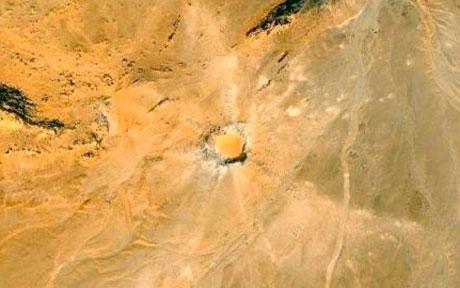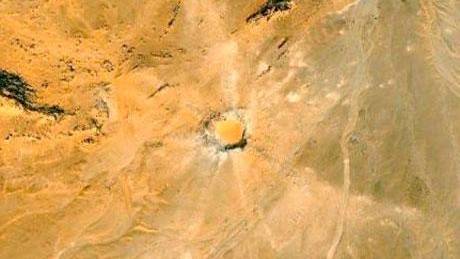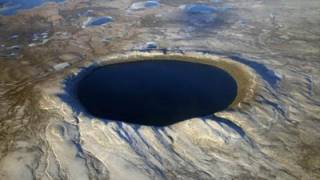Meteor crater found on Google Earth could help prepare for future impacts
Source: telegraph.co.uk
The impact would have generated a fireball seen more than 1,000 kilometres away, and scientists believe it is relatively young – potentially less than a few thousand years old.This means it is likely to have been seen by early humans.

The Kamil crater, which is 16 metres deep and 45 metres wide, is deep within the Egyptian desert, and was unknown until it was found using the search engine’s satellite images.
Caused by a ten ton mass of iron travelling at more than 12,000kph, it is one of the best preserved sites ever found.
The impact would have generated a fireball seen more than 1,000 kilometres away, and scientists believe it is relatively young – potentially less than a few thousand years old.
This means it is likely to have been seen by early humans.
The crater was spotted in the border region between Egypt, Sudan and Libya in 2008 by mineralogist Vincenzo De Michele, then with the Civico Museo di Storia Naturale in Milan, Italy.
He was searching for natural features when he chanced on the image on his PC screen.
He contacted astrophysicist Dr Mario Di Martino, at the INAF (National Institute for Astrophysics) observatory in Turin, who, along with Dr Luigi Folco, organised an expedition to the site in February this year.
The two week expedition took more than a year to plan, and involved 40 people driving for three days in 40 degree heat to find the site.
They collected fragments and carried out tests, and found that it was in remarkably pristine condition.
Dr Detlef Koschny said: "This demonstrates that metallic meteorites having a mass on the order of 10 tonnes do not break up in the atmosphere, and instead explode when they reach the ground and produce a crater,"
Dr Falco added: "We are still determining the geochronology of the impact site, but the crater is certainly less than ten thousand years old and potentially less than a few thousand.
"The impact may even have been observed by humans, and archaeological investigations at nearby ancient settlements may help fix the date,"
The European Space Agency, which helped fund the expedition, said: "The data gathered during the expedition will be very useful to ESA’s Space Situational Awareness programme’s activities for risk assessment of small asteroids with orbits that approach Earth, a category to which the Kamil impactor originally belonged."
Article from: telegraph.co.uk






















